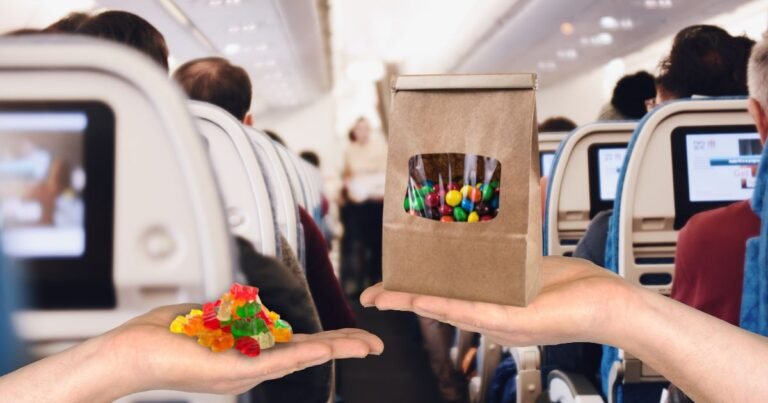
Can You Bring Candy On A Plane?
Your Complete Guide To Taking Candy On Your Next Flight in 2023 and 2024
- Nathan Heinrich
- June 20th, 2023
- USA, Italy & The World
Are you preparing for a long flight and wondering “Can you bring candy on a plane?”.
Air travel is lots of fun, but it is a good idea to follow the specific guidelines of the TSA, specifically the “3-1-1 liquids rule,” or those of the foreign country you will be visiting before bringing any kind of food, gummies, hard candy, alcoholic beverages as well as non-food items
The good news is that the answer is, as a general rule, “yes” you may practically bring as much candy as you want on planes, but with some major exceptions.
There are some restrictions with the types of candy you can bring with you on a plane which you should be aware of before you pack your carry-on baggage full of candy.
As a frequent traveler, here are some of the tips I have learned over the years.
This article contains everything you need to know about bringing candy with you on an airplane.
The TSA (Transportation Security Administration) in the United States has strict and specific rules about the kind of solid food and drink, including candy, that you are allowed to bring on a plane.
One of the roles of the TSA is to ensure the safety of all passengers and to make sure that the items brought onto a plane do not pose a potential threat.
Airport security was forever changed in 2001. Since then, additional screening in the security line of airports in the USA and around the world has changed the type of solid items, including your own food
Candy is in the category of “food and beverage”.
While you can put certain liquid items in your checked bag and very limited amounts in your carry-on luggage, you are not permitted to bring many types of liquids on a plane.
Most airlines provide a wide variety of drinks to passengers once they are on the plane.
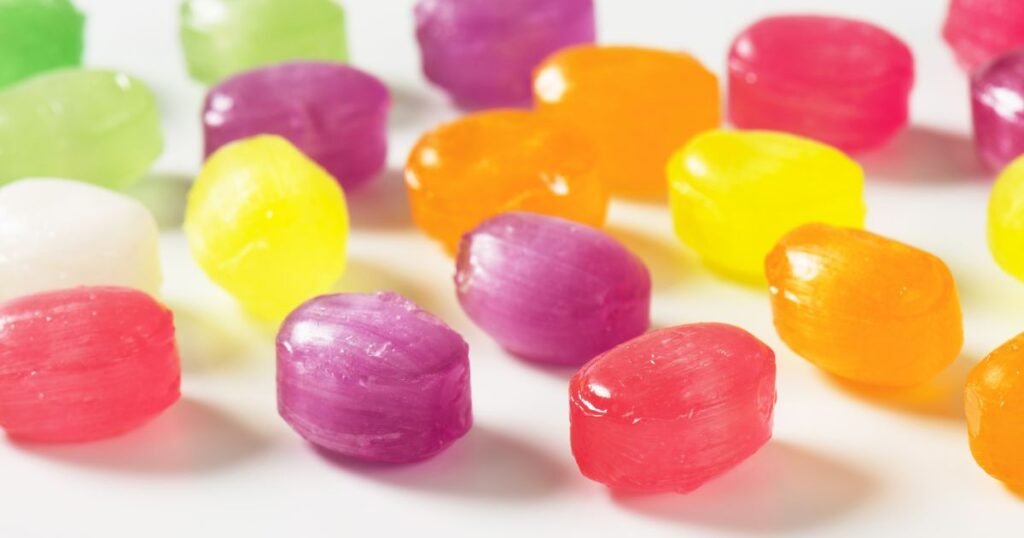
Solid Candy
As with any solid food, you may bring as much solid candy as you want onto a plane (as long as it is drug-free).
Examples of solid candy include hard candies, candy bars, candy canes, solid chocolates, cotton candy, chewy candy, chocolate, chocolate bars, suckers, and lollipops.
You should be aware that certain types of candy contain nuts and other allergens.
Sometimes a plane will be “nut-free” or “peanut free” if there are passengers on board with severe nut allergies.
If you find yourself on a plane that has announced it has passengers on board with nut allergies, you should keep any candy containing nuts sealed in its original packaging while on the flight.
If you start eating peanut butter cups next to a fellow passenger who has a peanut allergy it could cause them to go into a severe and even life-threatening allergic reaction.
To be clear, the quantity of candy in solid form is not restricted.
You may bring as many solid food items including open candy pop tarts, or other sweets in their original bag or in your resealable bag.
Also, if you are traveling internationally, make sure that your destination country does not have restrictions on the types of candy you can bring with you so that you avoid any issues upon arrival.
Australia, for example, has strict regulations related to bringing food items, and candy containing dairy, meat, or fruit may not be allowed.
It is always best to check with the customs agencies of both countries before packing any candy for international travel.
Here’s what the TSA website has to say about bringing food of any kind, including candy, onto an airplane:
“Food: Listen to the instructions of the TSA officer. In most cases, food or snacks such as fresh fruits, health bars, and sandwiches can stay inside your carry-on bag.
There are special instructions for liquids, gels, and aerosols, as well as for baby food, breast milk, and medically necessary items.”
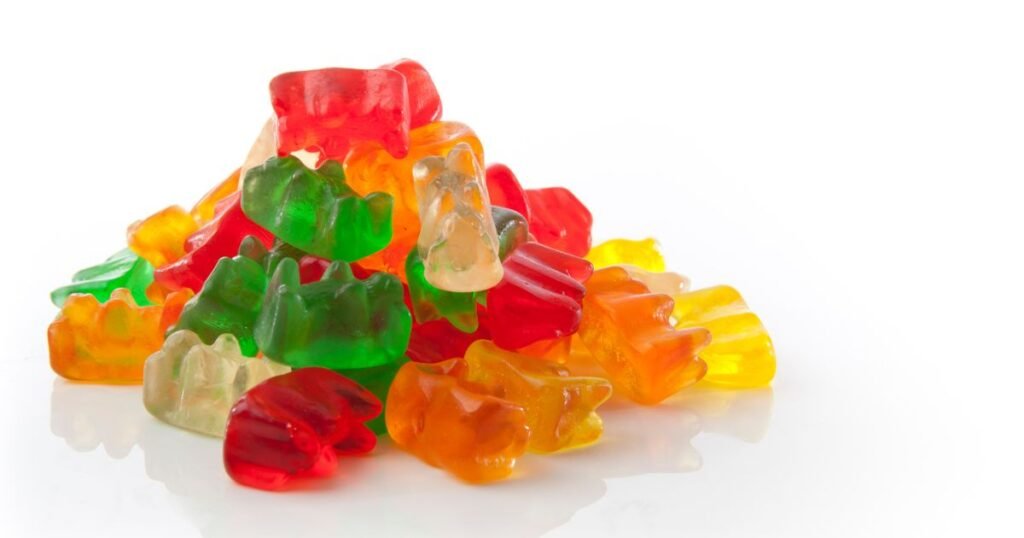
Gummy Candies
Candies in a gummy form such as gummy bears, gummy worms, and jelly beans can be brought with passengers in their carry-on bags or their checked baggage.
As described in the above information with solid candies, gummy candy may be brought on commercial flights in the USA in open containers as well as their original packaging in as large of quantities as desired.

Liquid Candy & Sweets
Liquid sweets and candy such as syrups, caramel sauce, honey, liquid candy tubes, or liquid chocolate are considered “liquid” rather than food and the same rules apply to these items as do bottled water or soda.
Included in this category are sweet creamy dips, and sweet spreadable foods like cranberry sauce, jams, and jellies.
Under the TSA’s “3-1-1 rule”, you are “permitted to bring a quart-size bag filled with liquids, aerosols, gels, creams, and pastes through the checkpoint.
Each of these items is limited to 3.4 ounces (100 milliliters) or less per item. Unless you plan to eat these items while on the plane, it is recommended that you pack them in your checked luggage.
If you are caught violating these rules, it is highly likely that it will be discovered at one of the TSA security checkpoints.
Your allowable hand luggage that is required to pass through x-ray machines may be searched and
Click here to visit their website for full details on TSA rules and TSA guidelines.

Gel Candy
Gel candies like fruit snacks with a gel center, squeezable candy tubes, spray candy, and any other type of sweet gel-like substance, liquid form, or jelly-filled sweets are permitted on airplanes.
However, as with liquid candy, they must follow the TSA’s 3-1-1 rule stating it must be packed in one of the approved quart-sized plastic bags mentioned on the TSA website.
If the container of gel candy is larger than three ounces, you may not bring it in your carry-on luggage, instead, you must pack it in your checked luggage.
Your best bet when it comes to anything you think may fit in the category of “gels” is to stow it in your checked bag.
Any gels or aerosols that are larger than 3.4 ounces (including gel-filled gummy vitamins or other supplements) are subject to the same 3-1-1 rule.
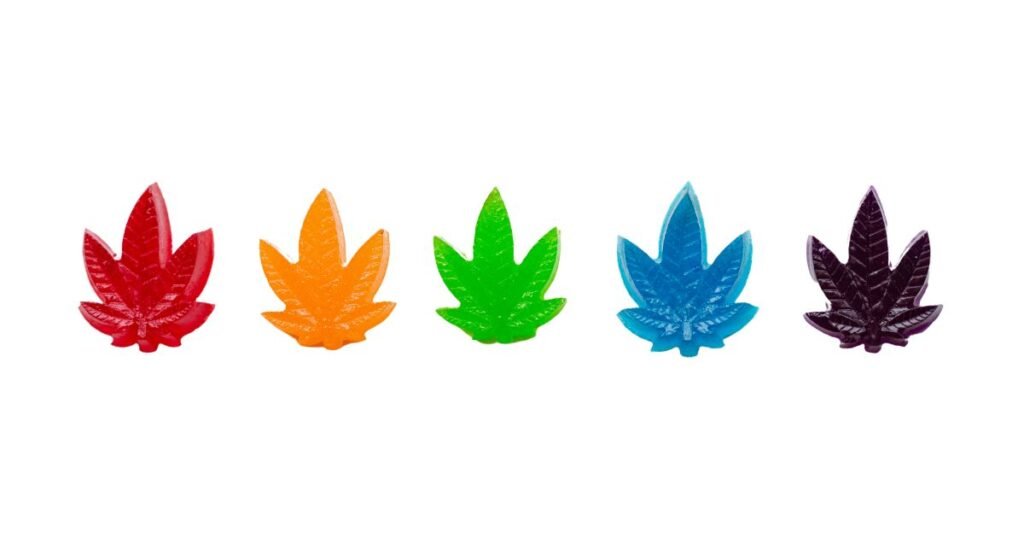
THC Candy
THC gummies should not be brought on planes because they violate federal law in the USA.
While a lot of people have traveled with THC products in their carry-on bags without having them confiscated, you run the risk of having them seized by TSA agents as they pass through the x-ray machine at TSA checkpoints.
Taking any amount of non-prescription drugs onto domestic or international flights is highly illegal and should not be done under any circumstances.
Many foreign countries have even stricter laws than the USA when it comes to bringing drugs or candies with drugs added to them within their borders via airplane or any other method.
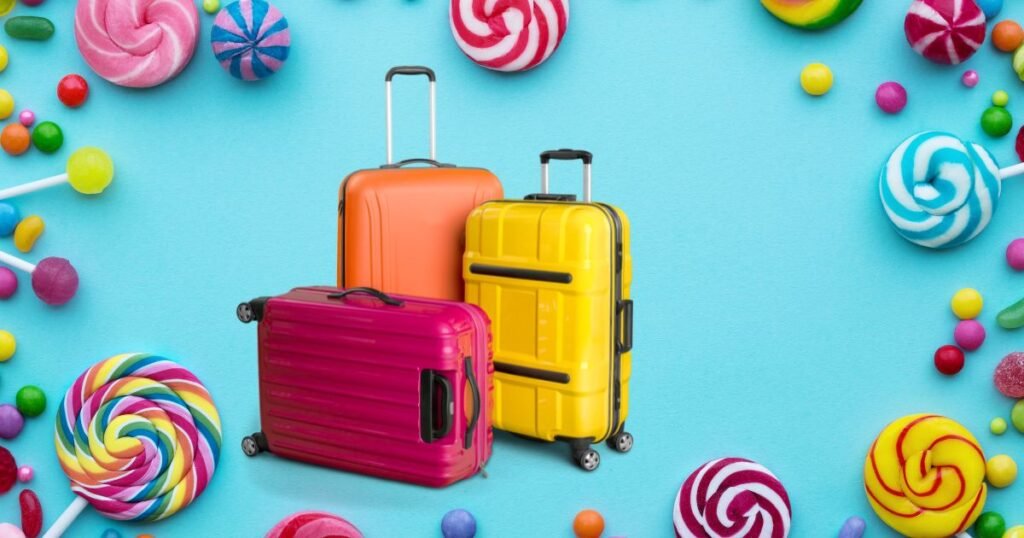
Summary
You have a green light to bring as many solid candies and gummy candies on a plane as you like.
You may also bring candy gel packs, candies with a gel center, or liquid candies onto an airplane, but they are limited by the TSA’s “3-1-1 liquids rule” and must be in a 3.4 oz ( 100 milliliters ) size container in your carry-on baggage.
If you want to bring larger amounts of these types of candies, you must pack them in your checked baggage.
Make sure not to bring candies containing non-prescription drugs onto any domestic or international flights (unless your flight is within a state where these items are legal or when flying from a state where these items are legal to another state where they are also legal).
As strange as it sounds, you have more freedom to bring candy onto a plane than a full water bottle.
So load up on your favorite candy and enjoy your flight.
Because the answer to the question, “Can you bring candy on a plane?”, is yes!

Dreaming of Moving to Italy?🇮🇹 - Get this FREE podcast & be INSPIRED by someone who moved from New York to Italy in 2020!
*By signing up for this Podcast you’ll also be joining our mailing list through which we will keep you up to date on all things Italian! We never sell your information and you can easily unsubscribe at any time.
Share This Post
Author Info:

Nathan Heinrich
Nathan is a writer, designer & horticulturist. He is the founder and Editor-in-Chief of "All Roads Lead to Italy" Magazine & host of the Top-10 Travel Podcast, "I'm Moving To Italy!". Nathan was born and raised in a 6th generation farming family in Northern California, he is currently, a dual Italian citizen, living in the Prosecco Valley of Northern Italy, near Venice.

